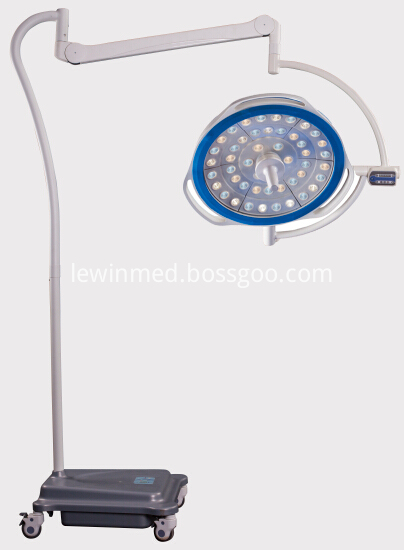Recently, readers of Mr. Zhou of Lucheng County, Mr. Liu of Luanping County, and Mr. Zhang of Tongbai County dialed the newspaper's hotline 110 for consultation on issues related to gray mold in strawberry. The reporter interviewed the relevant experts of this newspaper's expert advisory panel on this issue. Experts pointed out that strawberry gray mold mainly damages strawberry, tomato, sweet pepper, cucumber, lettuce and other vegetable crops. It is a common disease on strawberry and has a great impact on yield.
First, the harm symptoms
Strawberry gray mold mainly harms the flowers and fruits, but also can damage the leaves.
Flowerbed is infected. At the beginning of the flower buds, water-stained dots were formed, which later expanded into oval or irregular lesions and invaded the ovary and young fruit, causing it to become wet and rot. When the humidity is high, thick gray molds, ie, conidiophores and conidia of pathogens, are produced in the diseased part.
The fruit is infected. Occur mainly on green fruits, first on branches, first as water-stained, with pale brown lesions on the surface, developing into the fruit, causing the fruit to become soft and rot, and producing gray moldy layer in the diseased part. The fruit is easy to fall off. . When the weather is dry, the fruit is dry and rot.
The leaves are infected. The onset of the disease was water-stained, and the lesion became chlorotic after enlargement, showing an irregular shape. When the humidity in the field is high, the diseased surface produces a gray moldy layer, and when it is severe, the diseased leaves die.
The disease was caused by the impregnation of the fungus Botrytis cinerea. The bacterium nucleus in the soil or the conidiospore and mycelium with the remnants of the diseased plant remain in the field for winter and summer. When environmental conditions are suitable, conidia spread through the wind, agricultural operations and rain backspray on the host plants, and the initial dip, and in the affected part of the generation of new generation conidia, multiple infusion, increase the harm.
The pathogen is suitable for a warm and humid environment. The suitable temperature range for disease is 2°C~31°C, the optimal temperature is 18°C~25°C, and the relative humidity is over 90%. The optimum period for the development of disease is strawberry flowering, fruit setting and fruiting. Closing period; the incubation period is 7 to 15 days. In the early spring, the disease spread rapidly and the damage was severe when it was attacked by cold currents or continuous rain, high humidity environment, and the groundwater level was high.
Second, prevention and control measures
(a) Application of disease-resistant hybrids. To promote the use of large varieties of fruit, disease resistance, high yield of Baozao Zaosheng, Fengxiang, Lijiang, Mingbao and other fine varieties.
(b) Passage rotation. Onset of heavy land, promote the rotation of aquatic vegetables or grass crops for 2 to 3 years to reduce the source of field bacteria.
(c) Strengthen field management. Promote deep trench sorghum, plastic film cultivation, and reasonable close planting. Protection field cultivation timely ventilation, sunny days to increase the opening of ventilation and ventilation, cloudy days should also be appropriate short-term ventilation, reduce air humidity, and often pay attention to clear the ditch around the shed to prevent the accumulation of water after the rain and reduce Groundwater level, watering in the shed, fertilizing the soil with little water, controlling the humidity, and preventing damage caused by flooding and fertilizer.
(D) clean up the pastoral. The diseased fruit and diseased leaves were found to be removed in time, and the diseased bodies were promptly removed after the harvest, and the soil was deeply turned.
(e) Chemical control. At the beginning of the onset of spraying, spraying once every 7 to 10 days, continuous spraying 2 to 3 times. Severe illness field as the condition of the disease, if necessary, increase the number of spraying. The agent can use 40% Shijiale Suspension 800 ~ 1000 times liquid (mu dose 75 ~ 100 g), 50% Nongliling wettable powder 1000 ~ 1500 times liquid (mu dose 70 ~ 100 g), 50% quick Ling wettable powder 1000 to 1500 times liquid (mu dose 70 to 100 grams), 50% acetaminophen wettable powder 1000 to 1500 times liquid (mu dose 70 to 100 grams), 40% danning agent 600 suspension Times of fluid (increase of 170 grams per mu), 75% chlorothalonil wettable powder 600 times fluid (170 grams per mu).
Round type mobile LED Operating Lamp is vertical and movable, with exquisite shape, convenient movement and flexible usage. the mobile surgical lamp is applicable for ENT, urology, gynecology and obstetrics as assisted lighting. it has battery inside, the battery can last long for 8 hours. The mobile round type OT lamp can choose straight arm or tube arm to suit different requirment from the docotors. on the mobile operation lamp base, there has indication light to show battery capacity and AC/DC. The mobile surgical lamp can be used at surgical room also can be used at clinic or beauty center.

Floor Led Lamp,Floor Stand Lamp,Portable Led Floor Light,Mobile Operating Lamp
Shandong Lewin Medical Equipment Co., Ltd. , https://www.lewinmed.com